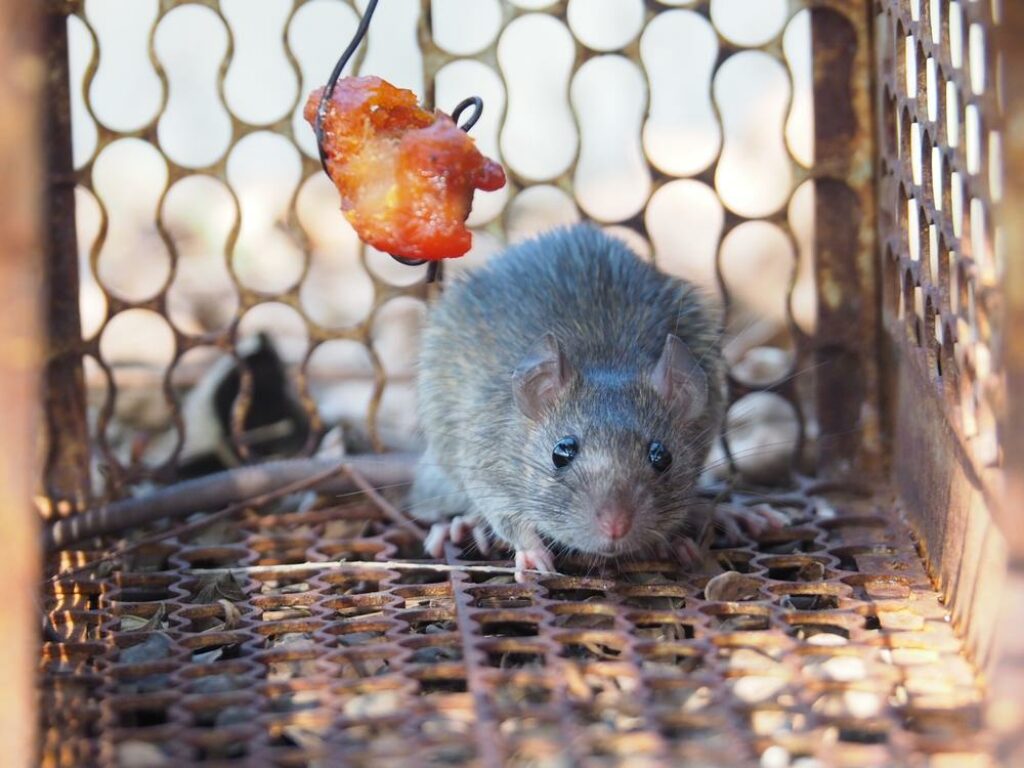
How to Get Rid of Mice and Rodents
Have you felt something crawl on your foot suddenly, or hear squeaky noises at night? Oh, rats! Mice, rats and other rodents are one of the absolute worst vermin your home can get invaded with. They often carry fleas / diseases, cause significant damage within walls and raid your kitchen cabinets.
Related Topics (Sponsored Ads):
These pesky rodents are very unwelcome intruders in homes and businesses. Not only are they a nuisance, but they can also pose health risks and cause damage to property. Getting rid of them requires a comprehensive approach that includes both non-poisonous and poisonous methods. It’s vital to do this as quickly as possible, as rodents are prolific breeders and reproduce at a fast rate.
This article will explore various effective methods to eliminate mice and rodents, discussing their suitability, effectiveness and advantages, as well as tips on preventing future infestations.

Identifying the Presence of Mice and Rodents
Before delving into methods of eradication, it’s essential to identify the presence of mice and rodents. Common signs include droppings, gnaw marks on food packaging or structures, nests made of shredded materials, and the presence of a musky odor. Additionally, hearing scratching or squeaking noises, especially at night, is a strong indicator of a rodent infestation.
Traps
Using traps is a humane and non-toxic way to capture and remove mice and rodents from your premises. There are various types of traps available, including snap traps, live traps, and electronic traps. Snap traps are spring-loaded devices that kill the rodent upon activation, while live traps capture the rodent alive for release elsewhere. Electronic traps deliver a quick, high-voltage electric shock to kill the rodent instantly.
Suitability: Traps are suitable for both residential and commercial settings, especially in areas where poison may pose a risk to children or pets.
Effectiveness: Traps are highly effective when placed in areas where rodent activity is observed, such as along walls, near entry points, and in dark, secluded spaces.
Ultrasonic Repellents
Ultrasonic repellents emit high-frequency sound waves that are designed to repel rodents. These devices are plugged into electrical outlets and are intended to create an unfriendly environment for mice and rodents, driving them away from the area.
Suitability: Ultrasonic repellents are ideal for use in homes, offices, and warehouses where the use of chemical or physical traps may not be feasible.
Regarding effectiveness, while some users report success with ultrasonic repellents, their effectiveness is often debated. Factors such as the layout of the space, frequency of the device, and rodent species may impact their efficiency.
Advantages: Ultrasonic repellents are non-toxic, odorless, and do not require the handling of traps or poisonous substances. They are also generally considered safe for humans and pets.
Rodenticide
Rodenticides, commonly known as mouse and rat poison, are chemical substances formulated to kill rodents. These baits are often designed to attract rodents and are available in different formulations, including pellets, blocks, and powders. Overall, Rodenticides are the method of choice for controlling large infestations in outdoor spaces, agricultural settings, and industrial facilities where non-toxic methods may be less effective.
Effectiveness: When used according to the manufacturer’s instructions, rodenticides can be highly effective in eradicating mice and rodents. However, it’s important to consider the risk of secondary poisoning to non-target animals.
Advantages: Rodenticides are capable of targeting multiple rodents over a period of time, making them a practical solution for widespread infestations. Additionally, they can be used in areas where traps may not be feasible, such as in hard-to-reach spaces.
Fumigation
Fumigation involves the use of toxic gases or fumigants to eliminate rodents within enclosed spaces. This method is typically carried out by licensed professionals using specialized equipment and procedures.
Go with this method if there is a severe infestation in large commercial or industrial structures where other methods may not provide comprehensive eradication.
Effectiveness: Fumigation is usually highly effective in eliminating rodents, as the fumigants penetrate areas that may be inaccessible through other methods. However, it requires very careful planning and execution to ensure safety and efficacy.
Advantages: Fumigation offers a systematic approach to eradicating rodents in complex environments, ensuring thorough treatment and preventing reinfestation.
Prevention Tips
In order to maintain a rodent – free environment and ensure prevention of a future infestation, it’s vital to follow these tips:
1. Seal Entry Points: Preventing mice and rodents from entering your property is crucial in maintaining a pest-free environment. Seal any cracks, gaps, or openings in walls, floors, and foundations using materials such as steel wool, caulk, or hardware cloth.
2. Proper Food Storage: Keep food items, including pet food, stored in airtight containers to prevent access by rodents. Regularly clean up spills and crumbs, and dispose of garbage in secure bins.
3. Remove Clutter: Clutter provides hiding spots for mice and rodents, making it important to maintain a tidy environment. Declutter storage areas, garages, and basements to minimize potential nesting sites.
4. Trim Vegetation: Trimming vegetation around the perimeter of your property can deter rodents from nesting near your home or building. Overgrown shrubs and trees can provide easy access for rodents to enter your premises.
5. Regular Inspections: Conduct regular inspections of your property to identify and address potential entry points and signs of rodent activity. Early detection can prevent infestations from escalating.
6. Professional Pest Control: Engage the services of professional pest control experts for routine inspections and preventive treatments. Experienced professionals can provide tailored solutions to protect your property from rodents.
By adopting a proactive approach to rodent control, individuals and businesses can create a safe and healthy environment free from the threats posed by mice and rodents.




